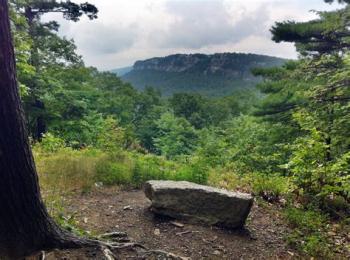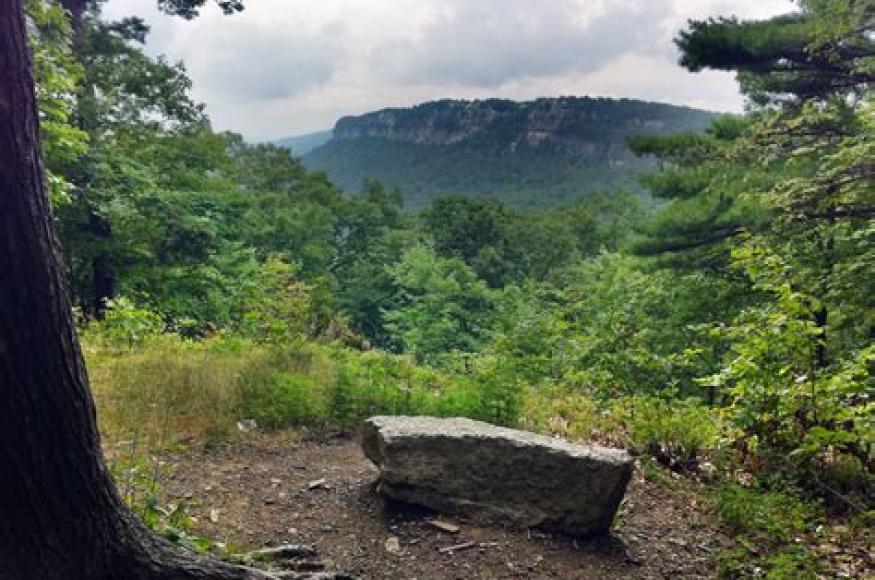Project Area
 The eastern hemlock-northern hardwood community type is the most vulnerable community type at Mohonk Preserve due to widespread decline and mortality due to hemlock woolly adelgid. Hemlock-northern hardwood forests are typically found on the property's ravines and lower slopes. The community is dominated by eastern hemlock and is associated with eastern white pine, sugar maple, red maple, yellow birch, black birch, and black cherry. The density of the canopy cover limits the ground layer. Shrubs and herbaceous plants are generally found in low densities.
The eastern hemlock-northern hardwood community type is the most vulnerable community type at Mohonk Preserve due to widespread decline and mortality due to hemlock woolly adelgid. Hemlock-northern hardwood forests are typically found on the property's ravines and lower slopes. The community is dominated by eastern hemlock and is associated with eastern white pine, sugar maple, red maple, yellow birch, black birch, and black cherry. The density of the canopy cover limits the ground layer. Shrubs and herbaceous plants are generally found in low densities.
Management Goals
Four main goals for this project include:
(1) Reduce the loss of bird habitat associated with eastern hemlock decline to minimize negative impacts on avian species and support recreational birding.
(2) Mitigate the long-term hydrologic impacts of hemlock decline.
(3) Assure future vegetation communities provide valuable recreational experience for users.
(4) Assure that HWA impacted stands continue to provide valuable ecosystem services and support desirable species as hemlock becomes less dominant.
Climate Change Impacts
Both the Mid-Atlantic Forest Ecosystem Vulnerability Assessment and the Climate Change Tree Atlas use projections of potential emission scenarios to model future climate change.
Challenges and Opportunities
Challenges
Opportunities
Adaptation Actions
Project participants used the Adaptation Workbook to develop several adaptation actions for this project, including:
1.2. Maintain or restore hydrology.
1.3. Maintain or restore riparian areas.
2.2. Prevent the introduction and establishment of invasive plant species and remove existing invasive species.
2.3. Manage herbivory to promote regeneration of desired species.
2.1. Maintain or improve the ability of forests to resist pests and pathogens.
2.2. Prevent the introduction and establishment of invasive plant species and remove existing invasive species.
3.1. Alter forest structure or composition to reduce risk or severity of wildfire.
5.2. Maintain and restore diversity of native species.
8.2. Favor existing genotypes that are better adapted to future conditions.

